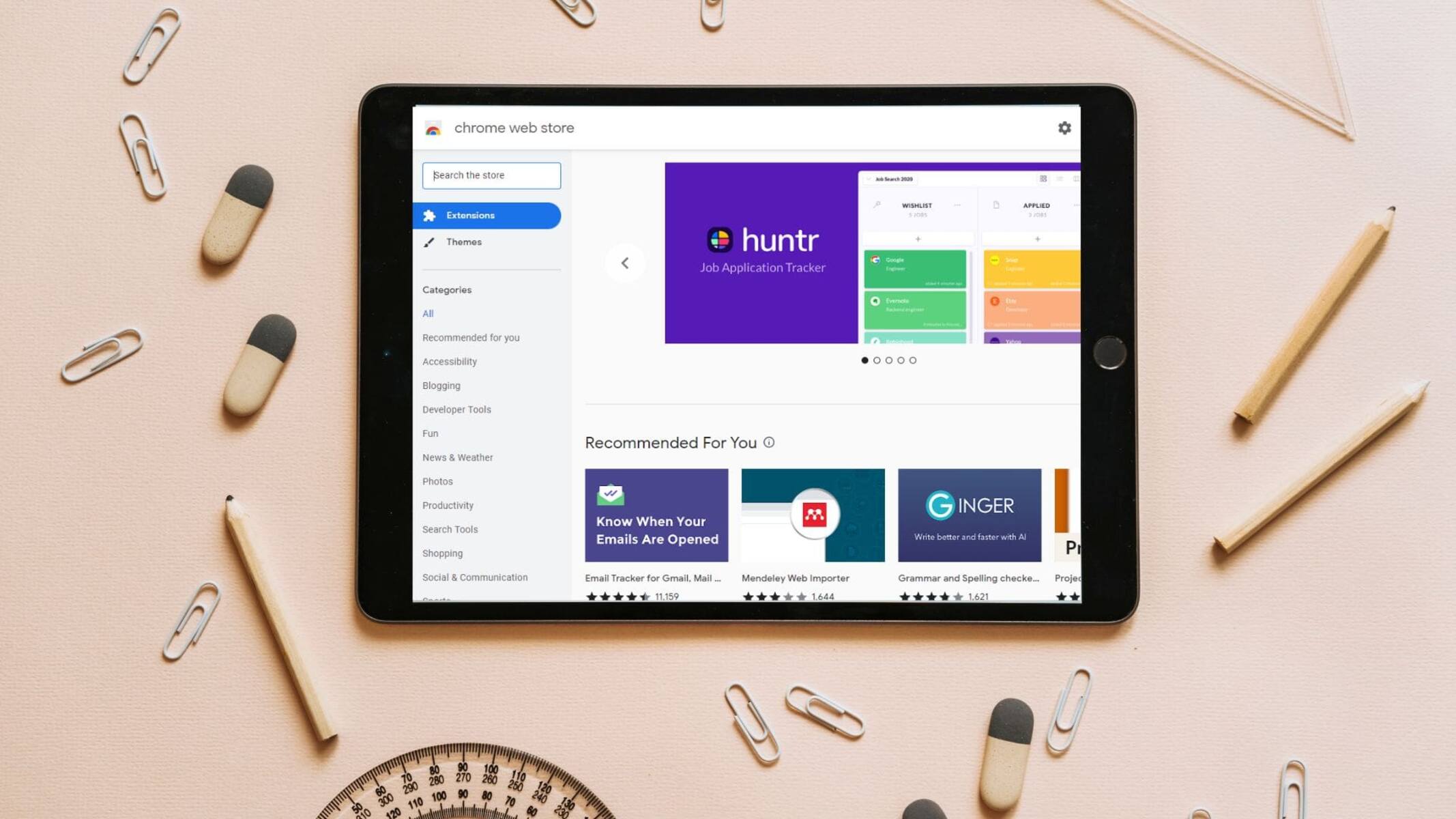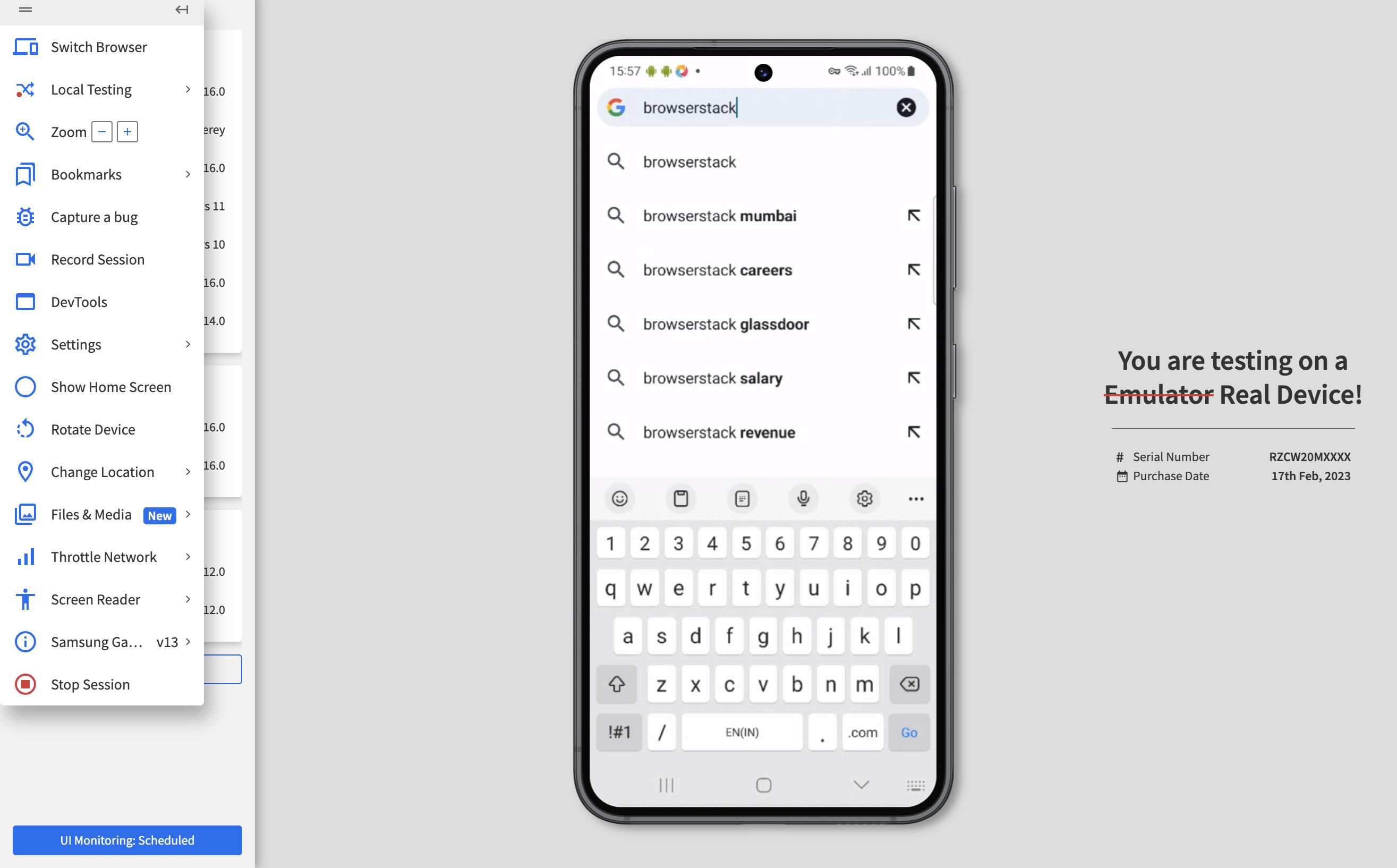Introduction
In the vast digital landscape, web browsers and extensions play a pivotal role in shaping our online experiences. They serve as the gateway to a multitude of websites, applications, and services, allowing us to seamlessly navigate the internet. However, behind the sleek interfaces and intuitive functionalities lies a crucial component known as the user agent.
The user agent, often referred to as the UA string, is a fundamental aspect of web browsing that impacts how websites are displayed and interacted with. It serves as a unique identifier, conveying essential information about the browser, operating system, and device being used to access a particular web page. Essentially, the user agent acts as a messenger, relaying details about the user's digital environment to websites and web servers.
Understanding the intricacies of the user agent is essential for both users and web developers. For users, it provides insights into how their browsers communicate with websites and how certain content is rendered. On the other hand, web developers rely on user agent data to optimize their websites for different browsers and devices, ensuring a seamless and tailored user experience across various platforms.
As the digital landscape continues to evolve, the user agent remains a critical element in the realm of web compatibility, accessibility, and user experience. In this article, we will delve into the significance of the user agent, explore how to identify it, and shed light on common user agent strings encountered in the wild. By gaining a deeper understanding of the user agent, users and developers alike can harness its power to enhance their browsing experiences and optimize web content for a diverse audience.
Understanding User Agent
The user agent, often referred to as the UA string, is a critical component of web browsing that serves as a digital fingerprint, conveying essential information about the user's browser, operating system, and device. It acts as a communication bridge between the browser and web servers, providing crucial details that influence how web content is presented and interacted with.
At its core, the user agent string consists of a series of characters that uniquely identify the browser, its version, the operating system, and other relevant details. This string is transmitted with every HTTP request sent by the browser, allowing websites to tailor their content based on the user's digital environment. From a user's perspective, the user agent impacts how websites are rendered, influencing the layout, styling, and functionality of web pages.
The user agent string is a powerful tool that enables websites to deliver optimized experiences across different browsers and devices. It allows web servers to detect the capabilities and limitations of the user's browser, facilitating the delivery of content that is compatible and tailored to the user's specific setup. Additionally, the user agent string plays a crucial role in enabling responsive web design, as it provides valuable insights into the user's device characteristics, such as screen size and resolution.
For web developers, understanding the intricacies of the user agent is essential for crafting inclusive and accessible web experiences. By analyzing user agent data, developers can implement strategies to ensure that their websites are compatible with a wide range of browsers and devices, ultimately enhancing the overall user experience. Moreover, the user agent empowers developers to detect and address compatibility issues, allowing them to fine-tune their websites to deliver consistent and seamless interactions for all users.
In essence, the user agent serves as a cornerstone of web compatibility and accessibility, influencing how websites adapt to the diverse array of browsers, devices, and operating systems utilized by users worldwide. By comprehending the role and significance of the user agent, both users and developers can leverage this vital component to foster a more inclusive and user-centric web environment.
Importance of User Agent
The user agent holds immense significance in the realm of web browsing, exerting a profound influence on how websites are accessed, displayed, and interacted with. Its importance resonates across various facets of the digital landscape, impacting both users and web developers in profound ways.
Enhancing User Experience
The user agent plays a pivotal role in shaping the user experience by enabling websites to adapt and optimize their content based on the user's browser, device, and operating system. This adaptability ensures that web pages are rendered in a manner that aligns with the user's digital environment, fostering a seamless and tailored browsing experience. Whether it's adjusting the layout for different screen sizes or delivering browser-specific functionalities, the user agent empowers websites to cater to the diverse needs of users.
Facilitating Compatibility and Accessibility
In the ever-expanding ecosystem of browsers and devices, ensuring compatibility and accessibility is paramount for web developers. The user agent serves as a crucial tool in this endeavor, allowing developers to identify the user's browser and device characteristics. Armed with this information, developers can implement responsive design principles and compatibility strategies to ensure that their websites are accessible and functional across a spectrum of platforms. This inclusivity is essential for reaching a broad audience and providing equitable access to web content.
Empowering Web Development
For web developers, the user agent is a valuable asset that provides insights into the capabilities and limitations of users' browsers and devices. This knowledge enables developers to fine-tune their websites, addressing compatibility issues and optimizing the user experience across different platforms. By leveraging user agent data, developers can craft web experiences that are not only visually appealing but also seamlessly functional, regardless of the user's chosen browser or device.
Enabling Targeted Content Delivery
The user agent empowers websites to deliver targeted content based on the user's browser and device attributes. This capability allows for personalized experiences, where content can be tailored to align with the capabilities and specifications of the user's digital environment. Whether it's serving optimized multimedia content or streamlining interactions for specific browsers, the user agent enables websites to deliver content that resonates with the user's unique setup.
In essence, the user agent stands as a linchpin in the intricate web ecosystem, driving compatibility, accessibility, and personalized experiences. Its role in shaping the digital landscape underscores its importance as a foundational element that underpins the seamless interaction between users and web content. By recognizing and harnessing the power of the user agent, both users and developers can contribute to a more inclusive, adaptive, and user-centric web environment.
How to Find Your Browser User Agent
Locating your browser's user agent is a straightforward process that varies slightly depending on the browser and device you are using. Here's a comprehensive guide on how to find your browser user agent:
Google Chrome
- Open Google Chrome and navigate to any web page.
- Click on the three-dot menu icon located in the top-right corner of the browser window.
- From the dropdown menu, select "More tools" and then click on "Developer tools."
- The developer tools panel will appear at the bottom or right side of the browser window. Click on the "Three vertical dots" icon in the developer tools panel to access the "Settings."
- In the settings menu, ensure that the "Preferences" tab is selected. Scroll down to the "Network" section and check the box next to "User agent" to enable it.
- Once the user agent option is enabled, the user agent string for your browser will be displayed in the developer tools panel.
Mozilla Firefox
- Launch Mozilla Firefox and visit any website.
- Right-click on the web page to open the context menu, and then select "Inspect Element" or "Inspect" from the options provided.
- The developer tools panel will open at the bottom or right side of the browser window. Locate and click on the "Responsive Design Mode" icon in the developer tools panel. This will activate the responsive design view.
- Once in responsive design mode, the user agent string will be visible at the top of the browser window, indicating the user agent for your Firefox browser.
Microsoft Edge
- Open Microsoft Edge and go to a web page.
- Click on the three-dot menu icon in the top-right corner of the browser window.
- From the dropdown menu, select "More tools" and then choose "Developer tools."
- The developer tools panel will appear at the bottom or right side of the browser window. Click on the "Emulation" tab in the developer tools panel.
- In the emulation settings, locate the "Mode" section and select "User agent string" from the dropdown menu. The user agent string for your Microsoft Edge browser will be displayed.
Safari (Mac)
- Launch Safari and visit a website.
- In the top menu, click on "Safari" and then select "Preferences."
- In the preferences window, navigate to the "Advanced" tab and check the box next to "Show Develop menu in menu bar."
- Close the preferences window and go to the top menu. Click on "Develop" and then choose "Show Web Inspector."
- The developer tools panel will open. Click on the "Responsive Design Mode" icon to activate it, and the user agent string will be visible at the top of the browser window.
By following these steps, you can easily locate the user agent string for your specific browser, enabling you to access vital information about your browser, operating system, and device. Understanding your browser's user agent empowers you to gain insights into how websites perceive and interact with your digital environment, ultimately contributing to a more informed and enriched browsing experience.
Common User Agent Strings
Understanding common user agent strings provides valuable insights into the diverse array of browsers, devices, and operating systems that populate the digital landscape. These user agent strings, comprising a combination of browser, version, and platform information, serve as distinctive identifiers that facilitate seamless communication between web browsers and servers. Here are some prevalent user agent strings encountered in the wild:
-
Google Chrome: The user agent string for Google Chrome typically includes details about the browser version, rendering engine, and the underlying operating system. An example of a Chrome user agent string may appear as "Mozilla/5.0 (Windows NT 10.0; Win64; x64) AppleWebKit/537.36 (KHTML, like Gecko) Chrome/88.0.4324.190 Safari/537.36". This string conveys information about the Windows 10 operating system, a 64-bit architecture, and the Chrome version 88.0.4324.190.
-
Mozilla Firefox: Firefox user agent strings often contain comprehensive details about the browser, version, and platform. An example of a Firefox user agent string could be "Mozilla/5.0 (Windows NT 10.0; Win64; x64; rv:88.0) Gecko/20100101 Firefox/88.0". This string provides information about the Windows 10 operating system, a 64-bit architecture, and the Firefox version 88.0.
-
Microsoft Edge: User agent strings for Microsoft Edge convey specifics about the browser, version, and platform. An example of a Microsoft Edge user agent string may appear as "Mozilla/5.0 (Windows NT 10.0; Win64; x64) AppleWebKit/537.36 (KHTML, like Gecko) Chrome/91.0.4472.124 Safari/537.36 Edg/91.0.864.59". This string includes details about the Windows 10 operating system, a 64-bit architecture, and the Edge version 91.0.864.59.
-
Safari: Safari user agent strings encompass information about the browser, version, and underlying platform. An example of a Safari user agent string could be "Mozilla/5.0 (Macintosh; Intel Mac OS X 10_15_7) AppleWebKit/605.1.15 (KHTML, like Gecko) Version/14.0.3 Safari/605.1.15". This string provides details about the macOS 10.15.7 operating system and the Safari version 14.0.3.
-
Mobile Devices: User agent strings for mobile devices, such as smartphones and tablets, contain specifics about the mobile browser, version, and device characteristics. For instance, a user agent string for an iPhone using Safari may appear as "Mozilla/5.0 (iPhone; CPU iPhone OS 14_5 like Mac OS X) AppleWebKit/605.1.15 (KHTML, like Gecko) Version/14.1 Mobile/15E148 Safari/604.1". This string conveys details about the iPhone device, iOS 14.5, and the Safari browser version 14.1.
By familiarizing oneself with these common user agent strings, users and developers can gain a deeper understanding of the diverse digital environments in which web content is accessed. This knowledge empowers developers to optimize their websites for a broad spectrum of browsers and devices, while enabling users to comprehend how their digital setups are perceived by the web. Ultimately, awareness of common user agent strings contributes to a more inclusive, accessible, and user-centric web experience.
Conclusion
In the ever-evolving landscape of web browsing, the user agent stands as a pivotal element that shapes the interactions between users and web content. Its role in conveying essential details about browsers, devices, and operating systems underscores its significance in driving compatibility, accessibility, and personalized experiences.
By unraveling the intricacies of the user agent, users gain valuable insights into how their digital environments are perceived by websites and web servers. This understanding empowers users to navigate the web with a heightened awareness of how their browsers and devices influence the content they encounter. Moreover, it fosters a sense of digital literacy, enabling users to make informed decisions about their online interactions and experiences.
For web developers, the user agent serves as a compass guiding the optimization of web content for diverse browsers and devices. Armed with user agent data, developers can implement responsive design principles, compatibility strategies, and targeted content delivery, ensuring that their websites cater to a broad spectrum of users. This inclusive approach not only enhances the accessibility of web content but also contributes to a more equitable and user-centric web environment.
As the digital landscape continues to diversify with an array of browsers, devices, and operating systems, the user agent remains a cornerstone of web compatibility and accessibility. Its ability to facilitate tailored experiences, adapt to diverse digital environments, and drive personalized content delivery underscores its enduring relevance in the realm of web browsing.
In essence, the user agent serves as a bridge that connects users and web content, fostering a symbiotic relationship that thrives on adaptability, inclusivity, and user-centric design. By recognizing the importance of the user agent and harnessing its power, both users and developers can contribute to a more cohesive and enriched web ecosystem, where seamless interactions and optimized experiences abound for all.

























